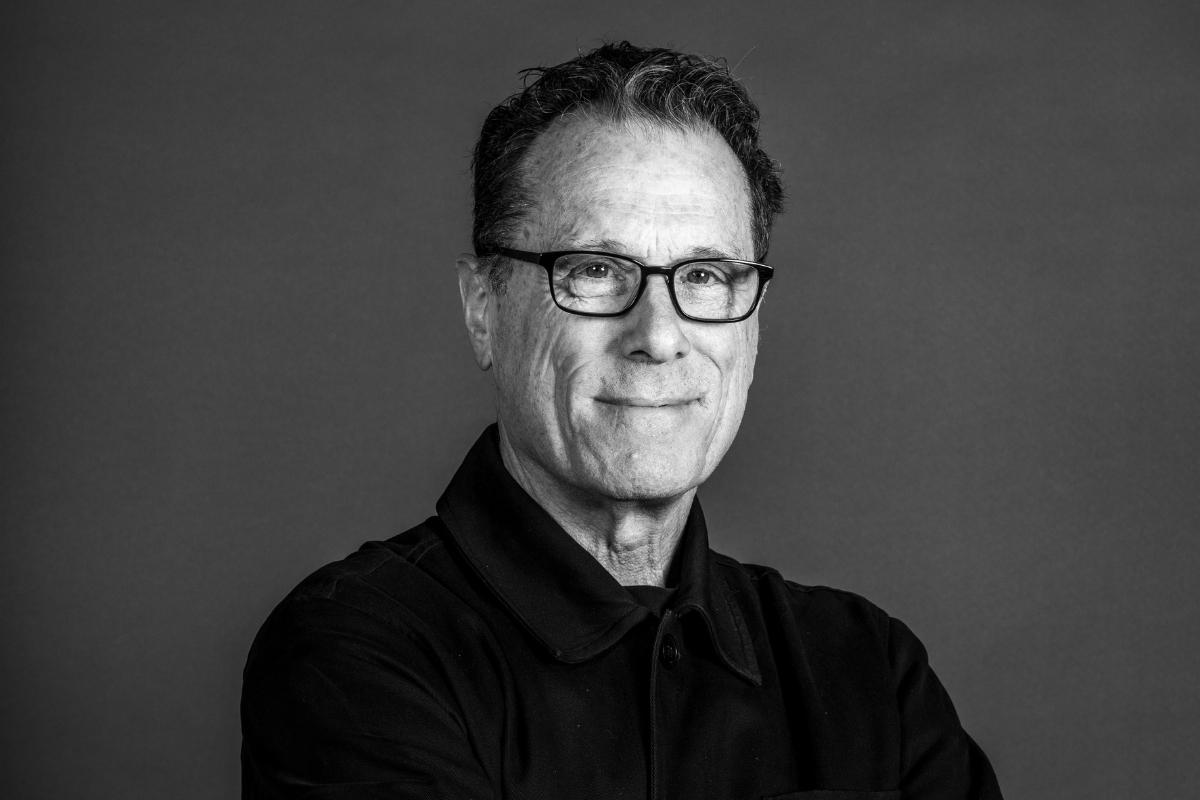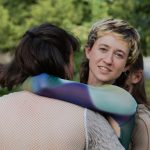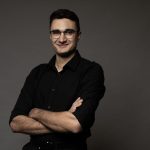interview by Daniela Hanelová
Douglas Rosenberg is an American visual artist, director, curator, theorist, and author of several publications on screendance, a genre that develops a dialogue between body, movement and camera. His work has significantly contributed to the establishment of screendance as an independent artistic and research field. On the occasion of the Film Festival in Prague, we spoke about his latest film The Sea, sources of inspiration, and dialogues with history. In the flow of reflections, he shares his observations about the evolution and future of the screendance, dynamics of curating and archiving, and imprinting of the life experiences into artistic creation.
I would like to start with your most recent film The Sea, which we have a chance to see within the Dance Film Festival in Prague. On the film, you worked with the choreographers David Dorfman and Benno Voorham, the rest of the group were non-professional performers in “their third age”, who didn´t know each other before. The presence and interconnectedness of all the performers in this film is unique and intense. How did you workwith them – respectively, how did you achieve that strong sense of togetherness of the group in such a short time – in a period of one project?
The first time that everyone was together was at a workshop at a community centre in Visby – that’s where the producer (Andreas Nordblom) and the cinematographer (Paul Wu), that I was able to work with, live, close by there. Visby is a very old city on the island of Gotland and it’s close to Bergman’s island of Fårö, a small island to the north, connected by a ferry. The first day of the workshop was maybe a year before we shot anything. I wanted to work only with men who were from that area in Sweden and were at least 60 years old. I’m 68. From the open call, there was a question asked to them, which was, why do you want to be involved in this project? The producer sent me the transcripts of what they wrote, and I was shocked at how beautiful their responses were. They had expressed where they were in their life, but in a way that I found to be really generous and open. One person would say, “I was a ship captain for 50 years. I drove the ferry back and forth 50 years and then I retired. Then my wife died and now I’m alone and I don’t know what to do with myself.” Or someone said “I was a teacher of children for many years and then they closed the school that I worked at. After that, I did all these other jobs that I didn’t like very much. I really missed working with the children and now I’m old and I live on this little house on island.” They all expressed some similar things that are important to me about this particular time in my life.
So, they came to the first meeting and sat down, and I started explaining some ideas and showing them some clips of my most recent films, and some storyboards in this particular project to see. I just told them, very honestly, about the things that I was thinking about. One was about masculinity and the possibility that masculinity could be a different thing than we all think it is. I told some stories about my father, what I remember of him and different things that I wanted them to know. And then I said, would anybody like to tell a story about their life? Whereupon they all went around and told different stories – it was really touching and lovely. They didn’t seem to feel any embarrassment or barrier.
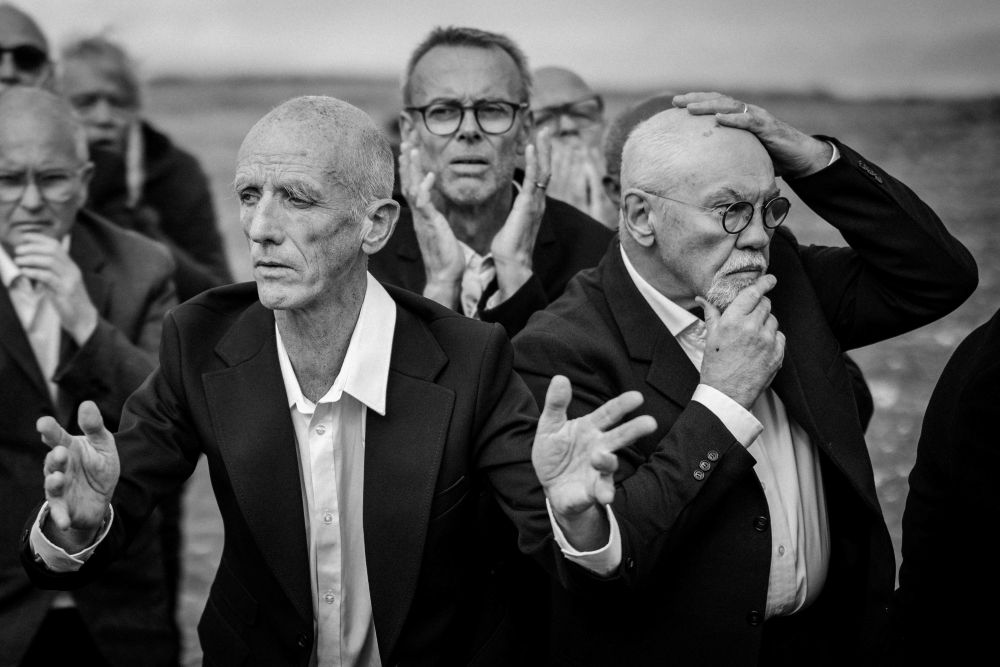
After the screening of The Sea and also now, when you are sharing your experience with how you brought this work to life, I recalled another of your films which is called My Grandfather’s Dances – from 1998. For those who don’t know the film, it’s a document portraying Anne Halprin´s performance, where she remembers her childhood and her grandfather. Halprin concludes her story with this sentence: “All my life, I’ve been searching for a dance that would mean as much to me, would have as much soul and spirit as my grandfather’s dance had for him.” What is the importance of dance in your life? And is there any connection, or a thread between these two films, for you?
I can´t believe you found that. The fact that you found that and just recited it back to me is… (pause) Anna Halprin just died recently at 100 years old. It’s a very long story. I grew up in California, in a small town, next to which lived thisvery famous dancer, named Anna Halprin. When I was young, I thought she was a crazy person. Her husband was an architect and landscape designer (ed. note: Lawrence Halprin). They lived on the side of a mountain, having this big wooden deck and people would come from all over the world, literally, to study with Anna Halprin.She was Jewish. There are some other connections – to the synagogue that I went to and grew up in – her husband worked on that when they built it. Anna Halprin was very well known at that time (in the 1960s) for her work with civil rights. She was working with the African American population in ways that nobody else was, using dance as the kind of vehicle. She worked with people who were outsiders before there was really the term outsiders. She worked with a lot of queer people too. Then as I got older, I had the opportunity to know more about her and where she came from. Her family were Jewish refugees. My family is Jewish, a different story, but there was that connection.
When I had grown up and moved from my town to a city, which was San Francisco, I started to see dance being performed in my early twenties (the mid-1970s) and I started to see more things “like” Halprin, at least the beginning of what was called postmodern dance. At a certain point, I started working with a video and taking some dance classes – I really wanted to be an artist who worked with dance. That was my dream. And everyone that I would take dance classes from was somehow connected to Anna Halprin.
Then, a series of events, I was working with a choreographer, and we had a commission to go to the American Dance Festival, where dancers come from all over the world to study and perform. I was doing this kind of very early video work with dance. After the festival was over, the director asked me if I would be interested in coming to work for the festival as the person who did video documentation of all the dance that came through. So, every summer for many years, I went there and documented every dance company that came in.
And of course, Anna Halprin came. She had worked in that time period (in the 80s) with people who were affected by HIV-AIDS in San Francisco and California, which was devastating. Everyone in her life, people particularly in the dance community, were devastated by HIV-AIDS. She was one of the first people who thought about using art and dance to help people through the trauma of dying. Then at a certain point she herself had cancer. She got very sick and she very publicly said, I’m going to use dance to heal myself. She started having the workshops that were very intense and beautiful. People who were very sick and traumatized would come, and she would work with them through this powerful kind of movement. It was very ritualistic.
So, she came to the American Dance Festival and I followed her for about a week with the camera and documented everything she did. I had seen her do this piece that was called My Grandfather´s Dances. In the story, she talked about her two grandchildren – she wanted them to know about the story of her grandfather. She only ever performed the dance twice, one for each child. But she said, I’m going to do it again here for you in this live performance. She told this beautiful story about her grandfather, who was a very devoted Jewish man in a small place near Chicago, and how Anna, as a child, would go to the synagogue and she would sit in the women’s section because the orthodox Jews would split the women and the men. And she would look down and watch her grandfather dance and then at a certain point her grandfather would invite her to come and dance with him. She thought he looked like God. She felt like she had held God’s hand and danced with God through her grandfather.
I was very taken by that and I was also very bold at that time in my life, asking her if she would be interested in making a film version of that piece. She said that she would like to do that. So, we made this film called My Grandfather´s Dances, which is a part of restaging of the piece for the camera – I think, it was one of the first times I ever thought that art could be really personal and also talk about faith and life and death. I made that piece and that opened a lot of doors for me in lots of different ways.
And since you asked about that, in this film, The Sea, there’s a lot of different homages to people who’ve been important in my life. This is something that I’ve been very conscious of in the last while. Every time I make a film or any kind of project at all, I feel very grateful that I have this opportunity and I’m very aware that maybe this is the last opportunity for me. I always try to put everything I can in that piece, just in case.
If you look at the Anna Halprin pictures, she did a lot of dances with branches and sticks and objects from nature. In the film that I made before this one (Song of Songs), I started to play with those ideas also. But in The Sea, I really wanted to make an homage to Halprin. Some of what you see in this film, the branches that come from nature, that’s directly – the only word I can think of is homage, a tribute to Halprin. No one has ever asked me about that before.
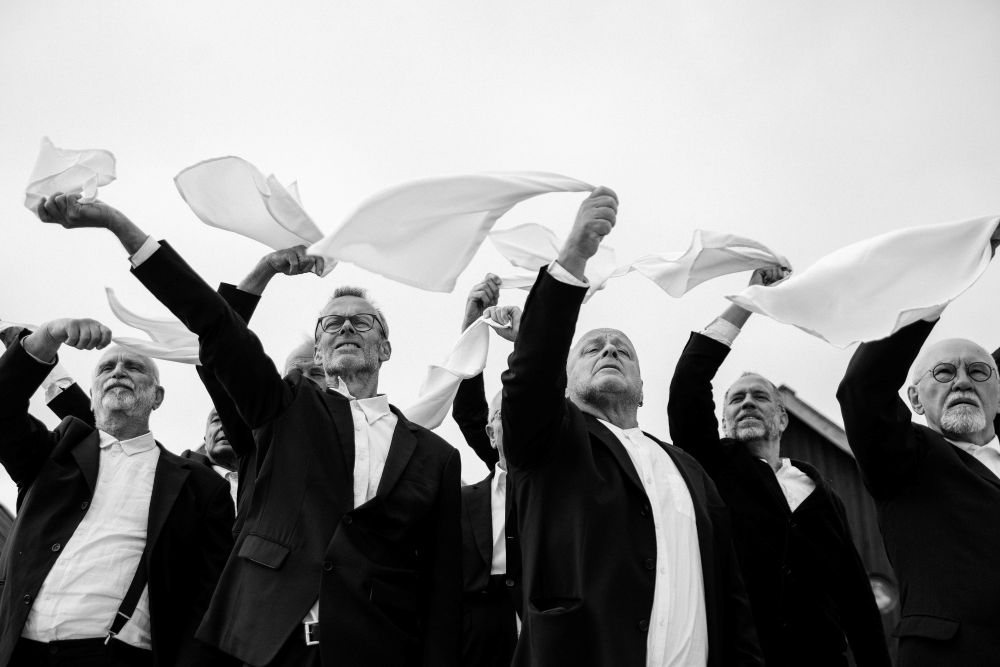
That’s so fascinating to see that thread in your work. You touched a bit the topic of how you started your artistic journey, and when you first connected dance and video – and maybe we can stay there a bit more for a while. You studied at the San Francisco Art Institute. How do you remember that time period? What were the cultural influences that shaped your artistic path as a young person?
I grew up in the 60s and 70s in the San Francisco Bay Area, which was very famously a kind of Bohemian place. There was, in fact, a movement called Bohemianism, out of that came poetry, jazz, all sorts of art, amazing things. The 60s in America, in particular in the arts community, was really extraordinary. I’m digressing a little bit, but later in my life, I was able to work with a woman named Sally Gross, also a Jewish woman from New York, who was part of the Judson Church Group. Again, being very bold, I was able to find her phone number. I called her and said, you don’t know me, I think your work’s extraordinary, and I’d like to see if you would let me make a film of you. It took a long time to convince her. But then, at any rate, the point is that my work has been shaped by the movements of the mid-20th century through some amazing artists and teachers.
Feminism was very important to me. Many of my teachers that had a big impact on me, were feminist women, many of them were feminist and Jewish. When I went out from a high school into the world, I didn’t have the opportunity to go right to college. So, I worked as a carpenter. I did a lot of different things. But I was very interested in dance, interdisciplinary work, and poetry. I was doing a lot of performance art and just trying to kind of figure out how these artists were engaging with the world, which fascinated me so much.
Then finally, I had the opportunity when I was in my 30s to go to art school. I really needed to go. I was pretty old to begin to study art. I knew about this one place because my father had gone there after the war. My father was in the Navy, and when the servicemen came back from World War II, the government paid for their education – it was called the GI Bill. For some reason, my father went to that art school. I applied there, and I got in. Suddenly, I was in this milieu where people were really serious about art. Life and death serious. And my teachers were very accomplished, well-known people. At the same time, I was still working with the choreographers and other people in dance, trying to figure out how to put those things together.
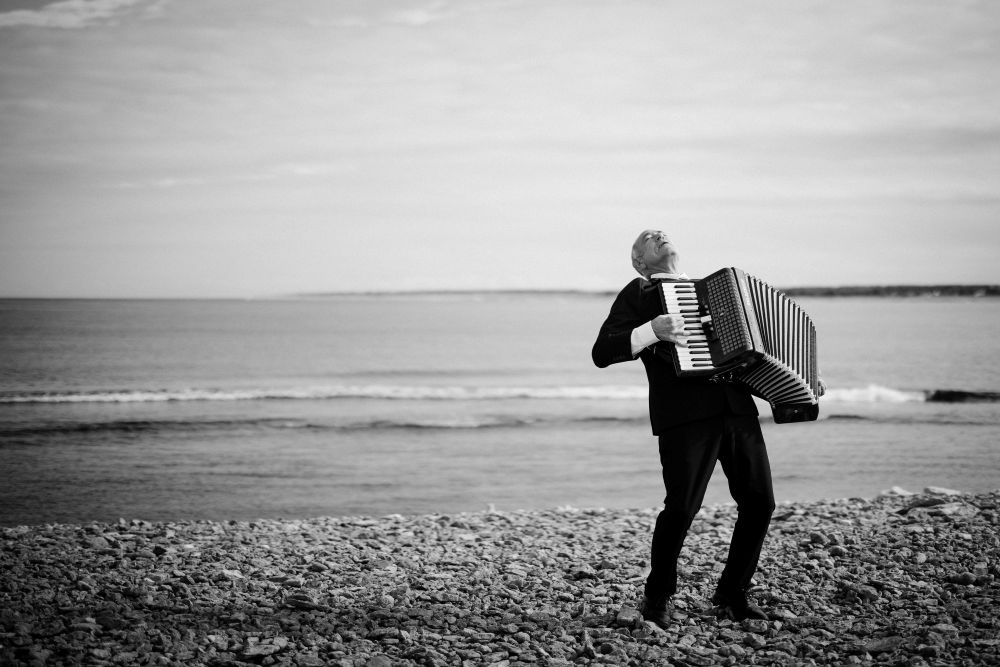
Was it the time of collaboration with June Watanabe?
That’s the person! June Watanabe. You´re very good! I went to my first dance class when I was maybe 24. I went at a little studio with nine-year-old boys because I was a beginner and they were already better. June Watanabe was the teacher. At some point, I said, would you be interested in letting me collaborate with you? Because I had seen this work that Robert Rauschenberg had done with Trisha Brown and I’d started seeing a lot of this kind of work in contemporary dance, and I wanted to do that. And she said, sure, yes. So, we worked together for a long time. She was the person I mentioned earlier – the person that I got to the American Dance Festival with.
It’s very interesting how that time period is so similar to this time period. In 1984, when I was in school and working with her too, June Watanabe was doing this project called EO-9066. During World War II, the President of the United States made this executive order named EO-9066 that called for the government to round up all of the Japanese people because they could be possible enemies of the United States. So, all the Japanese people, who were citizens of the United States, were rounded up and put in camps in the United States. Nobody ever even imagined this kind of thing could happen. June Watanabe grew up in a camp, when she was a child, and she was making these dance performances about that. Similar to Halprin, I was able to see how people could use their life experience to make artwork.
Regarding your work at the American Dance Festival, you then became the founder of the screendance festival, which exists under the auspices of the ADF. What was the process of establishing the platform devoted to the dance films?
I mentioned that they asked me if I would come and document dance. At that point in my life… I use the word “bold” again – I think I was very sure of myself more than I should have been. They said, would you do this documentation? And I said yes but would like to teach a class also – we called it in those days video dance or dance with camera. There were no classes really around, not many. And they said yeah, sure, go ahead. I learned a lot about the possibilities of teaching this kind of work because I had to make it up – because of the lack of any existing curriculum. Then I realized there were so many people making these films, videotapes about dance and dance as a subject. So, I went back again and said, I think it would be great if we could have a festival. At that point, there were two or three festivals in the world that were focused on screendance. I think there was one in Paris, one in New York, maybe one more in Europe, not many. In the United States, we were the second festival. Coincidentally, they just called me, a couple of months ago, and said, this is a 30th anniversary of the festival that you started. Are you interested in coming back and celebrating that? And so, we´re doing something this summer to celebrate that festival.

I´m always curious how do the individual artists work, what are their daily practices. You are very much interdisciplinary-oriented. What is your process of creating work?
I have to say that there are couple things that are consistent. One is that I teach, I am a professor at university, teaching studio art, history and theory. I am always attentive to those classes, so I´ll be there thinking about those things and expressing those things to students and that keeps me always very aware of them. And then of course I am used to writing. I also have found that is very important for me to be very embodied. Maybe it seems silly, but I take Pilates classes very regularly – with military precision. I went yesterday here in Prague, because for me, to be in my body, is very important. I go for long walks in the country. I don’t listen to music then, I don´t think about anything and create the possibility that ideas will come. And then, there is the other part of being the artist, which is the part where you have to raise money and you have to find places for your work to be screened…
Your wife Li Chiao-Ping is a choreographer and artistic director, and you also made couple of dance films together. How is the collaboration between you as a director and a choreographer going? Who initiates the creation of individual projects and how do you complement each other in the creative process?
When we first met and when we were first working together, Chiao-Ping was not really working with film or video, but she was extraordinary dancer and choreographer. It was really split between those things; I would have an idea for a film, as I was watching Chiao Ping´s work, and we would talk about it – I was making the film, she was making the choreography and performing. Then it started to blur, we started collaborating on certain pieces, where the boundaries were kind of seamless. And the projects get bigger. We had a company together in San Francisco (ed. note: Dziga Vertov Performance Group). At a certain point, for a lot of reasons, things got busy, we kind of stopped doing that. She makes her own films now. It got to be a little bit too much for us to be always involved; working together, raising our child, living together. We don’t really do much work together anymore. But now and then.
I want to ask you about the International Journal of Screendance, which you founded in 2010, together with Katrina McPherson and Claudia Kappenberg. Coincidentally, the Dance Film Festival here in Prague was founded just one year before (in 2009).
Same age.
Yes, 15 years of screendance. How do you observe the change within this genre? What was the situation, when you established the journal? With which vision you created this project? And how does it evolve over time?
I think I got my teaching position in 1997. And one of the first things I did, when that happened, was that I organised an International Symposium on Screendance. Because I knew that many people in Screendance were, in that time period, in the age I am now and I thought that I really wanted to just get all those people in a room to have conversations. Therefore, in 2000, we brought considerable amount of people to my university – many people who were working in screendance who were in their 40s, 50s, 60s, and even later, came to the symposium (and bunch of younger people too). That was kind of moment in screendance. Katrina McPherson, Claudia Kappenberg and other people from the UK started to communicate on screendance. I went over to the UK in 2006. Katrina and Simon Fildes had organised a gathering for “screendance people” in Scotland and out of that came conversations about the need for some sort of literacy for screendance. There were no books, only a few articles and essays – I wrote an essay in 1999, that still seems to get lot of attention. But there wasn´t a place where people were collectively thinking and writing about this work. Out of that situation, in the UK, there was a fund for scholars, who were collaborating internationally. We collectively applied for that money to do these meetings – they gave us money for three or four international meetings, out of which then came the journal which was collectively created by a small group of dedicated scholars and makers.
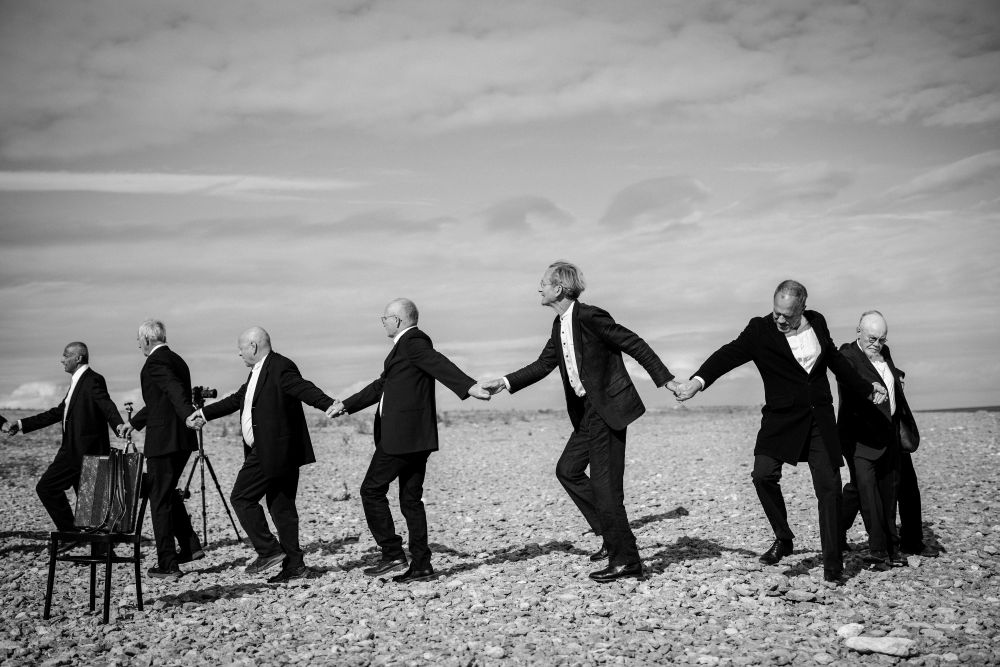
It seems there is quite a dynamic change in the field of screendance – in your opinion, how the whole scene of screendance evolved over the years?
Well, it´s synergistic. I think – this is my feeling – as people started to write more about the field, and other people started to read the writing about the field, the things just started to grow. After the journal came out, it was 2012, I wrote a book on screendance (ed. note: Screendance: The Ephemeral Image) and around the same time, Katrina Mc Pherson wrote a book about making screendance (ed. note: Making Video Dance: A Step-by-Step Guide to Creating Dance for the Screen). Then Erin Brannigan from Australia was talking about dance screen practices in connection to the history of cinema (ed. note: Dancefilm – Choreography and the Moving Image). Suddenly, there was a journal, there were the books that introduced the field, then I organised a second book, that was called…
…Oxford Handbook of Screendance
Yes, Oxford Handbook of Screendance Studies. I invited 36 people around the world to write a chapter – that book is just a huge way to think about screendance. And there are another books – Cara Hagan has written a book about screendance festivals and curatorial practice (ed. note: Screendance from Film to Festival: Celebration and Curatorial Practice). I met Cara 15 years ago; she is a filmmaker and newly appointed director of the Dance on Camera Festival in New York and part of a generational shift that´s happening in screendance. As you probably know, where there used to be three or four festivals, now, there´s, I don´t even know how many, hundreds, thousands festival around the world. That´s quite different than was.
Another topic that interests me a lot, and it´s related to your curatorial practice; how do you perceive the relation between curating the films for the festivals and archiving them? What do you think about the sustainability and lifespan of the dance films?
This is the biggest problem, for me. The festival model is to always be attentive to what´s happening in the moment, to the things that are made in the last couple of years. And almost always, every festival will show only one piece by one artist. If you think about the way that art world works – it´s built on curation, meaning that somebody is thinking about the relationship between things, and organises the exhibitions, where one thing is juxtaposed to some other thing in very precise ways and they introduce questions about the form. But screendance, generally speaking, has become very attached to this particular model of festivals that prescribe the ground rules of what they want to see, and the people who make the films pay money to have their films considered, so it´s monetized. It´s something to talk about. The duration of the films for the most part that festivals want, are very short. Then, people, if they want to have their films shown at the festival, they conform to those rules, so we don´t know what they might have made, if… Archiving is then something I think about a lot. My very first job at the American Dance festival was to direct the video archival project. Which was in those days really mad – we recorded everything, then we took the tapes, we put them in the box, we marked it and put the box away. And so, somewhere in a building in North Carolina, are all the boxes nowadays, but nobody can see them. Collecting things is one thing, but making an accessible archive is more difficult – and to be honest, I´ve tried and I thought about it a lot, and I don´t know what the answer is. Except to say that there are couple places in the world – there´s place in France called Numeridanse supported by the Ministry of Culture, and archiving French dance film, particularly, but others too. You can contact them, and you can see a lot of work there and streaming as well. But otherwise, it´s very difficult. I started a space for archiving at our university – things from the symposium I told you about and another symposium after that – the idea will be to have an open-source archive, but it´s difficult. There´s no one asking for a long-term commitment or continuous tending. It´s a problem.
It seems that there´s really no sufficient space and conditions for archiving these works, which are witnessing something very ephemeral and present.
I return to something that you asked a long time ago about The Sea. I think about art as a continuum, meaning the way that I understand art is that I know what happened in the early 1900’s, and what the artists were doing in the 1920’s, later in mid-century, and then at the end of the century. I think about how I can be in conversation with the dada artists, or the Futurists, or the Bauhaus artists, on a continuum of time, across history. I perceive film in the same way. In my films, they are particular homages, so, I am having a conversation with history and with filmmakers before me. But that´s only because those archives are available. With screendance, what often happens, is that younger filmmakers especially, they don´t know the sources, so they are constantly, in a way, re-inventing the same wheel.
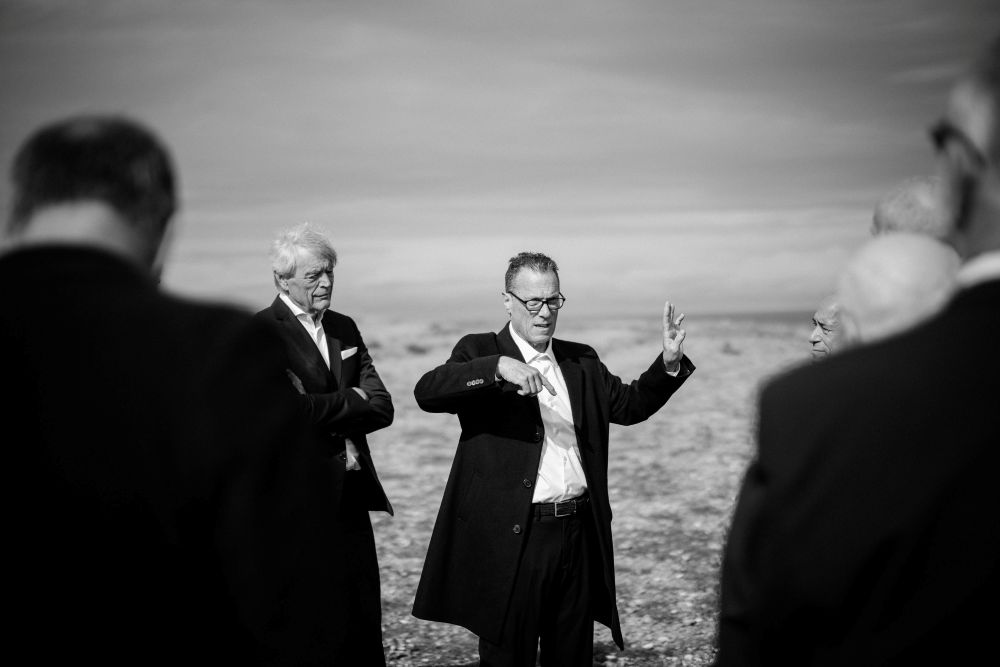
It might be very interesting for the emerging creators to really have a chance to go to the archive and see the things and have a source and the connection to…
There are so many festivals and courses on screendance. And yet, all of those people who teach those things and all the people who curate those things, are curating and teaching a different history. If you think about ballet for instance, mostly, people will teach a certain canon. Or at least, they will introduce it in order to deconstruct it. With screendance, everyone who is learning at this, is learning differently. That´s a very post-modern situation. There isn´t just one kind of place, where people might go and learn.
That´s a really interesting fact that in reflecting the screendance, there isn´t one direction or one historical canon – that it´s much more individual what the focus is put on. Did you have a chance to see something from the program of the Prague Dance Film Festival? What are your impressions?
Yes, I watched the programme yesterday, I watched the Tommy Pascal´s film The Seasons of Dance. And I am going today, this afternoon. I think, what Jana (ed. note: Jana Návratová, director of Dance Film Festival in Prague) is doing, is great and valuable. There´s a sort of distinct difference between younger people who are just beginning to make films, screendance or dance film, and people who have been making them for a long time. There were pieces that I found really compelling and interesting, of course, I have to say, The Seasons of Dance moved me very much. And Roméo´s work Silentium (ed. note: Roméo Lefèvre) – I mean, Seasons of Dance, and Roméo´s work, were highlights for me, so far. I think it´s difficult to make festivals. And it´s very rare that the dance film festivals will show that duration of the feature length work. It´s very rare!
Maybe one of the last questions; how do you imagine the field of screendance will evolve in the future years? If, for example the AI technologies will play some role in it? But mainly, what is important for you in the screendance – what are the criteria, or the aspects you are always searching for?
First, about your AI question, which is to say as respectfully as possible, I have no interest in that question, because I think that it could be AI, digital technology, any kind of technology – technology comes and goes… and it comes and goes… But the core is the artists’ ideas. Maybe AI will be useful, I don´t know. For me, what´s most useful is creating deep relationships with the subjects of my work and being in real time with them in a very human way. More to your question – the future. The things that I wrote about – from the very first time I ever wrote about anything in screendance, are exactly the same things that I am interested in now. Understanding of history, art, literature, film, poetry, and dance – are all important to any artists making work today. Maybe, it seems that never changes. I think that being truly inspired by something in the world is super important for artists. Curating, real curating – is really important to the form. People like Jana (ed. note: Jana Návratová) are actually thinking deeply about the form and creating juxtapositions and interactions between works of screendance. That is really at the heart of what it means to be a human being, moving in the world.
So, to thinking about the future, which is always, dreaming… When we came, my wife and I, to our jobs at the University of Wisconsin 30 years ago, there was a program called Inter Arts and Technology that I was hired to teach in. It was really this amazing idea about what if dance was considered in the spaces of technology of the time, and this was again the late 90s. Those technologies were analogue cameras, recording devices, editing equipment, and sound recording. Basically, the same things we have now, but they were just analogue, they weren’t digital. The potential for that program, the reason that I wanted to go there, was that we could start a program that focused on screendance. Well, thirty years or so and it did not happen, and it never happened for lots of reasons. And so just now, we have finally been able to get funding and everything is worked out that we just announced our first (in the United States) Master of Fine Arts – MFA program in screendance. Starting next year, we’ll begin with our first two graduate students, studying screendance, in a way that for me is ideal, which is theory, practice, curation, all the things that, I’ve been writing about, talking about for a very long time and hopefully we can be helpful and, facilitate artists who are really multidisciplinary and really understand the field, helping to move the field forward.
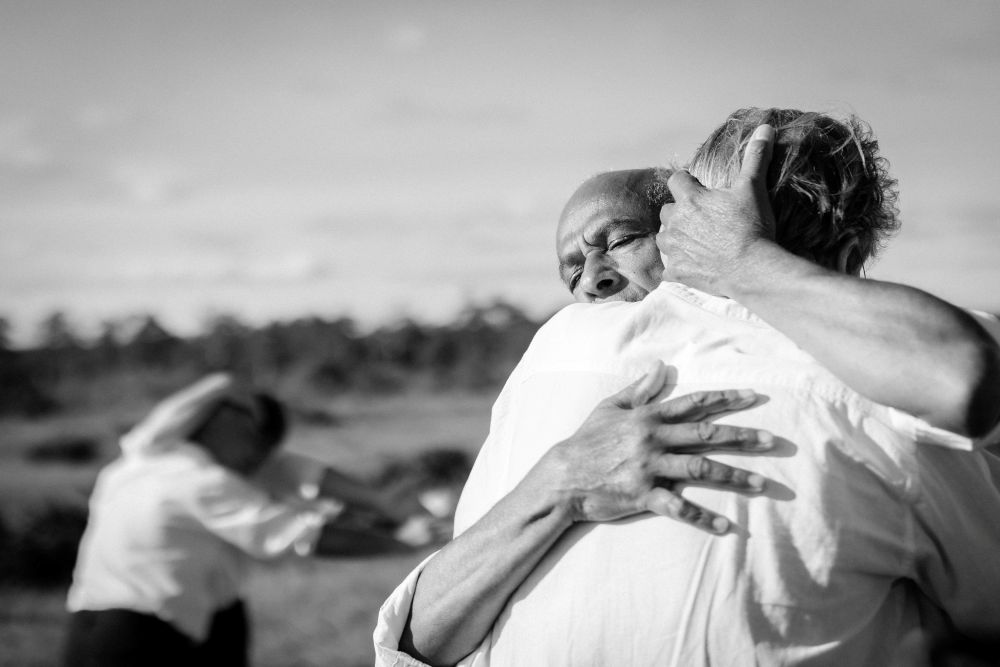
Congratulations, that’s a great thing.
It´s a very small one, but small things sometimes start to become something bigger. May I say one more thing? The question you asked me about Anna Halprin and My Grandfather´s Dances – clearly it made me very emotional. And that moment, it made me think about, again, what´s important to me. The response that I´ve been getting to see, the kind of emotional response that I´ve been getting from people who view The Sea, is exactly what I want for screendance and for art in general. I want to be… involved in work and experiencing work that makes me cry or hurt or feel joy or something. That really is part of the idea of the future too, for me – to always be either making or experiencing work that is about life and death and really important things in the world.
Thank you that you came back to Anna Halprin and also your film The Sea – for me, that multi-layered work of art was a real essence of screendance. What are your next plans with this film?
I think, if you were in the room last night, you´d maybe heard me say that in June the film is going to Bergman´s island, where we shot it. And all the men, who were in it, will come to the screening – which I can´t even imagine! And I´m really happy to be here in Prague. I´m happy that everyone takes the festival so seriously. It´s a kind of poetry.
Thank you for an inspirational interview and I wish a great success to your film!
Douglas Rosenberg
Douglas Rosenberg is one of the most significant artists and theorists of contemporary screendance. He is a Vilas Distinguished Achievement Professor and former chair of the Art Department at the University of Wisconsin-Madison. His artistic work, involving performance, video, installation and interdisciplinary projects, has been shown both in the United States and in museums, galleries, on public television and in festivals around the world. He is the author of several publications – Screendance: Inscribing the Ephemeral Image (2012), The Oxford Handbook of Screendance Studies (2016), for which he was awarded the Oscar G. Brockett Book Prize for Dance Research, and Staring at the Sky, Essays on Art and Culture (2024). He is a founding editor of The International Journal of Screendance. His work has been supported by numerous grants and awards including, the NEA, The Rockefeller Foundation, The Soros Foundation, the MAP Fund in New York and the James D. Phelan Art Award in Video. He is most recently the recipient of the Creative Arts Award. His newest film The Sea, shot on the Island of Fårö in Sweden, premiered in 2025.


